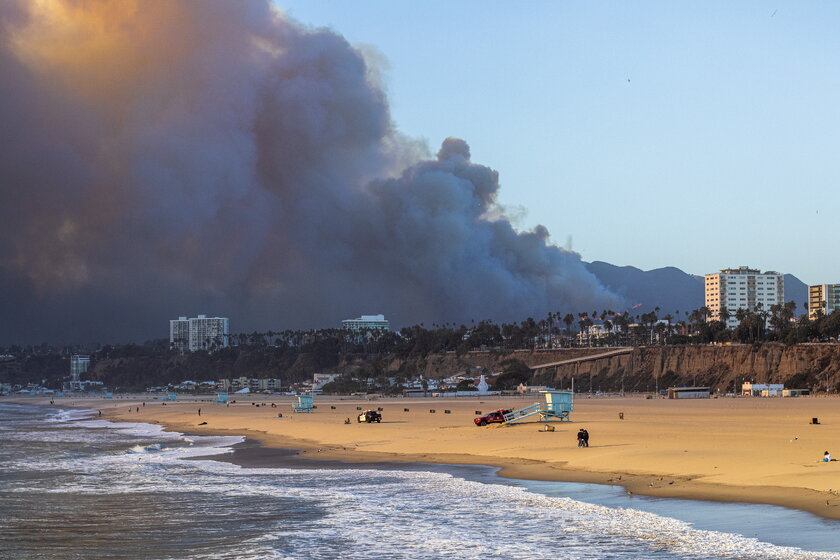Essential Disaster Assistance for Small Businesses
Streamline Your Small Business!

Disasters can strike at any time, leaving small businesses vulnerable to physical damage, operational disruptions, and financial strain. In the wake of the current major fire in Los Angeles, it is crucial for small business owners to understand the resources available to help them recover.
Immediate Steps to Take After a Disaster
- Ensure Safety: Prioritize the safety of employees and customers. Assess damages only when it is safe to do so.
- Document Losses: Take photos and maintain detailed records of damaged property, equipment, and inventory.
- Contact Your Insurance Provider: File a claim as soon as possible and request guidance on temporary measures to prevent further damage.
- Seek Assistance: Begin exploring federal, state, and local disaster relief programs.
This guide outlines key disaster assistance programs from the Small Business Administration (SBA), the Federal Emergency Management Agency (FEMA), and the U.S. Chamber of Commerce, providing practical steps for accessing relief and rebuilding.
The SBA provides low-interest disaster loans to help businesses recover from physical and economic losses. These loans are available to businesses of all sizes, nonprofits, and homeowners affected by declared disasters.
a. Physical Damage Loans
- Covers repairs or replacement of real estate, equipment, inventory, and other assets damaged or destroyed by the disaster.
- Loans of up to $2 million are available.
b. Economic Injury Disaster Loans (EIDL)
- Offers working capital to small businesses that have suffered substantial economic injury, even if no physical damage occurred.
- Loans are also capped at $2 million.
Current SBA Response in Los Angeles: Due to the ongoing fire in Los Angeles, the SBA has activated disaster loan assistance for affected small businesses. Businesses can apply online at the SBA’s Disaster Loan Assistance portal. For questions, contact the SBA Disaster Assistance Customer Service Center via email at disastercustomerservice@sba.gov. You can also call 800-659-2955 from 8:00 a.m. – 8:00 p.m. ET Monday through Friday. If you are deaf, hard of hearing, or have a speech disability, please dial 7-1-1 to access telecommunications relay services.
FEMA offers financial aid and other support to individuals and businesses impacted by disasters.
a. Public Assistance Grants
Helps communities repair and rebuild infrastructure and facilities. While geared toward municipalities, it indirectly benefits businesses by restoring essential services.
b. Individual and Households Program (IHP)
Provides financial assistance to individuals and businesses for temporary housing, medical needs, and other essential expenses.
How to Apply: Businesses affected by the Los Angeles fire can register for FEMA assistance at DisasterAssistance.gov or by calling 1-800-621-3362. FEMA’s Disaster Recovery Centers (DRCs) are also operational in affected areas to provide in-person assistance.
The U.S. Chamber of Commerce Foundation provides resources and guidance for businesses navigating disaster recovery. Their Disaster Help Desk for Business offers personalized support to small businesses.
a. Disaster Help Desk
The Disaster Help Desk offers one-on-one expert assistance to small businesses before, during, and after disasters. Whether you’re preparing for wildfire season or managing recovery from a flood, their team provides guidance tailored to your needs.
Since 2007, the Disaster Help Desk has connected thousands of businesses with a wide network of resources, including the Small Business Administration (SBA), FEMA, and local emergency management organizations.
Businesses can turn to the DHD team for advice on recovery measures, accessing financial support and overcoming operational challenges.
b. Resilience Toolkit
A comprehensive guide to building disaster resilience, including checklists for preparedness, communication strategies, and insurance planning. Reach out to the team at resilience@uschamber.com if interested in learning more.
c. Community Reinvestment Efforts
The Chamber works with local organizations to restore infrastructure, connect businesses with volunteers, and coordinate relief efforts.
In addition to federal programs, state and local agencies often provide grants, tax relief, and other forms of assistance during disasters. The Los Angeles Office of Emergency Management (OEM) is actively coordinating resources to support businesses affected by the fire. Visit their website or contact local economic development offices for updates.
Practical Tips for Recovery
- Leverage Grants and Donations: Many organizations, such as the Red Cross and local nonprofits, offer immediate cash grants or material donations to small businesses in crisis.
- Engage in Business Continuity Planning: Use recovery time to develop or refine a business continuity plan to mitigate risks in the future.
- Explore Tax Relief Options: The IRS often provides tax relief to disaster-affected areas, such as deferred deadlines and deductions for uninsured losses.
photo credit:
iStock.com/Ward DeWitt


